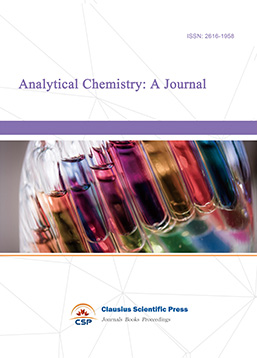Thermodynamic, Mechanical and Electronic Structure Properties of Wollastonite with Different Crystal Forms
DOI: 10.23977/jmpd.2021.050116 | Downloads: 20 | Views: 1726
Author(s)
Haiqi Li 1
Affiliation(s)
1 Nanjing University of Technology, Nanjing, Jiangsu 211816, China
Corresponding Author
Haiqi LiABSTRACT
This paper uses the first principle calculation method based on density functional theory to analyze the mechanical and thermodynamic properties of β-CaSiO3 and α-CaSiO3 under different isostatic pressures. Based on the plane-wave pseudopotential method and the proton balance equation (PBE) in the generalized gradient approximation (GGA), the elastic constants, flexibility constants, bulk modulus, shear modulus, Young’s modulus and Poisson’s ratio of two calcium silicate crystals under different pressures are calculated by using the exchange correlation function to judge the mechanical properties of calcium silicate, such as ductility, brittleness, hardness and plasticity. The results show that the Young’s modulus and rigidity are the largest under the pressure of 6Gpa and when the pressure is 10Gpa, the Poisson’s ratio is the largest, indicating that its plasticity is the best.
KEYWORDS
First principle, Calcium silicate, Mechanical propertiesCITE THIS PAPER
Haiqi Li. Thermodynamic, Mechanical and Electronic Structure Properties of Wollastonite with Different Crystal Forms. Journal of Materials, Processing and Design (2021) 5: 76-79. DOI: http://dx.doi.org/10.23977/jmpd.2021.050116.
REFERENCES
[1] Chen Hongsun. Metal Elastic Anisotropy [M]. Beijing:Metallurgical Industry Press, 1996, 20- 80.
[2] Rahman M A , Rahaman M Z , Rahman M A . The structural, elastic, electronic and optical properties of MgCu under pressure: A first-principles study[J]. International Journal of Modern Physics B, 2016, 30(27):084101-.
| Downloads: | 4088 |
|---|---|
| Visits: | 253403 |
Sponsors, Associates, and Links
-
Forging and Forming

-
Composites and Nano Engineering

-
Metallic foams

-
Smart Structures, Materials and Systems

-
Chemistry and Physics of Polymers

-
Analytical Chemistry: A Journal

-
Modern Physical Chemistry Research

-
Inorganic Chemistry: A Journal

-
Organic Chemistry: A Journal

-
Progress in Materials Chemistry and Physics

-
Transactions on Industrial Catalysis

-
Fuels and Combustion

-
Casting, Welding and Solidification

-
Journal of Membrane Technology

-
Journal of Heat Treatment and Surface Engineering

-
Trends in Biochemical Engineering

-
Ceramic and Glass Technology

-
Transactions on Metals and Alloys

-
High Performance Structures and Materials

-
Rheology Letters

-
Plasticity Frontiers

-
Corrosion and Wear of Materials

-
Fluids, Heat and Mass Transfer

-
International Journal of Geochemistry

-
Diamond and Carbon Materials

-
Advances in Magnetism and Magnetic Materials

-
Advances in Fuel Cell

-
Journal of Biomaterials and Biomechanics


 Download as PDF
Download as PDF